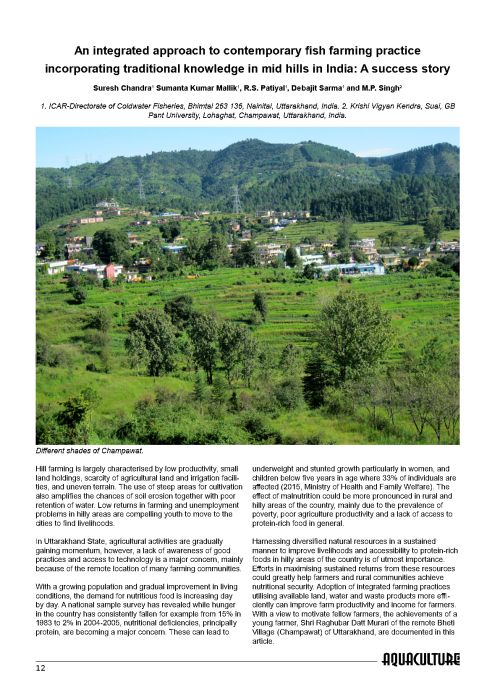An integrated approach to contemporary fish farming practice incorporating traditional knowledge in mid hills in India: A success story
5 June 2019 | Suresh Chandra, Sumanta Kumar Mallik, R.S. Patiyal, Debajit Sarma and M.P. Singh | 1747 Downloads | .pdf | 5.78 MB | Freshwater finfish, India, Inland aquaculture, Livelihoods, gender and social issues
Farming in the mid hills is largely characterised by small land holdings, low productivity, scarcity of agricultural land and irrigation facilities, and uneven terrain. The use of steep areas for cultivation also increases the risk of soil erosion together with poor retention of water. Low returns in farming and unemployment problems in the mid-hills are compelling youth to move to the cities to find livelihoods.
A national sample survey has revealed while hunger in the country has consistently fallen, nutritional deficiencies, principally protein, remain a major concern. These can lead to underweight and stunted growth, particularly in women and children below five years in age.
Harnessing diversified natural resources in a sustained manner to improve livelihoods and accessibility to protein-rich foods in hilly areas can help rural communities achieve nutritional security. Adoption of integrated farming practices utilising available land, water and waste products more efficiently can improve farm productivity and income. The achievements of a young farmer from a remote village working to motivate others are documented in this article.
Creative Commons Attribution.

